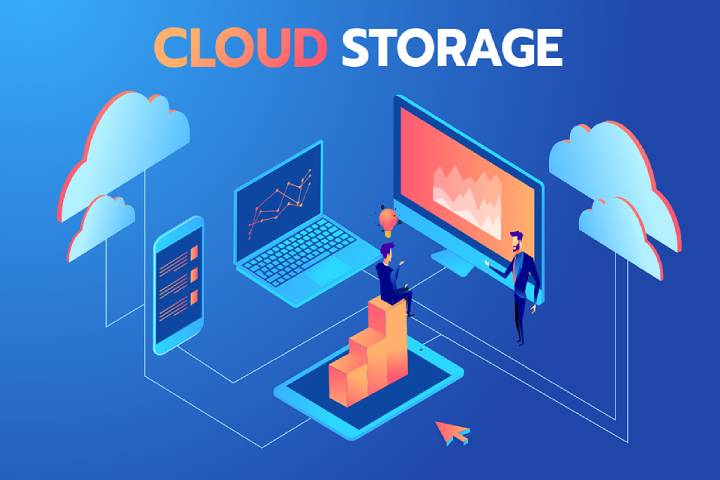Are you ready to move your business to the cloud but unsure where to start with pricing and plans? Don’t worry; we’ve got you covered. In this guide, we’ll walk you through everything you need to know about cloud storage pricing so you can find a solution that fits your budget and needs. We’ll compare the major providers like Google Drive, Dropbox, OneDrive, and Box based on storage amounts, user limits, security features, and price. Whether you’re a small business just starting or an enterprise with thousands of employees, the cloud has flexible options for any size organization.
The cloud allows businesses like yours to stop worrying about physical storage limits and maintenance and instead focus on serving your customers and growing your company. But first, you need to determine how much storage you need, how many people need access, and how much you can afford to pay each month.
1. Understanding Cloud Storage Cost Factors
Regarding cloud storage pricing, it comes down to a few key factors.
Storage Capacity
The more data you need to store, the higher the cost. Most providers charge per gigabyte stored per month. If your business is growing quickly, look for a provider that offers discounts for multi-year commitments to lock in lower rates.
Data Transfer
How often you access your stored data impacts the bill. Data transfer refers to moving data into (uploading) and out of (downloading) the cloud. Providers usually charge per gigabyte of transfer. If you’re frequently uploading and downloading large files, storage with unlimited data transfer may save you money.
Additional Services
Do you need extras like file sharing, syncing, backup, or archiving? These additional services affect the total cost. Some providers bundle additional features at no extra charge, while others charge per service. Choose only what you need.
Financial Impact
How will cloud storage costs impact your bottom line? Monthly or yearly subscriptions allow for predictable budgeting, while pay-as-you-go models charge only for what you use, which can vary each billing cycle. Consider your current and future needs to find an option that won’t break the bank.
With an understanding of these key factors, you can choose a cloud storage solution tailored to your business and budget. Now, isn’t that worth investing in? Your data is your business, after all.

2. Strategies for Cost Optimization
To keep costs under control, you’ve got to optimize. Here are a few strategies to consider:
Compare and contrast providers
Do some research to compare pricing, features, and limits across top providers like Dropbox, Google Drive, and OneDrive. See who offers the best value for your needs. You can get more storage or extra features for the same price.
Pay annually instead of monthly
Most providers offer discounts if you pay for a year upfront versus going month-to-month. You can save up to 50-75% annually by paying annually. If cash flow is a concern, see if they offer annual billing with monthly payment options.
Look for promo deals
Providers frequently run promo deals, especially around major holidays. Look for coupon codes and promo links on their website or search online for the latest offers. You can easily score 5-50% off for the first year.
Set storage limits
Only pay for as much storage as you truly need. Most plans start with a free tier and charge based on usage. Review how much data you’re storing to determine an optimal plan size. You can always upgrade later if your needs increase.
Enable compression
File compression reduces the size of your data so you can store more in less space. Most cloud storage services offer file compression and deduplication to minimize what you store. Compression rates of 2:1 or 3:1 are common, allowing you to cut your storage needs significantly.
You can optimize costs and maximize your cloud storage budget with simple strategies. Compare, save annually, hunt for deals, set limits, and compress – your bottom line will thank you!
3. Hidden Costs and Billing Pitfalls
Cloud storage pricing models can be complicated, with many hidden fees and billing details that often catch new users by surprise. Watch out for these common cost traps:
Overage charges
Most providers offer plans with a set amount of storage included, like 1TB. Anything over that limit incurs overage fees, costing up to $0.10/GB. Ensure you understand your usage and choose a plan size to suit your needs to avoid surprise overage bills.
Bandwidth fees
Bandwidth refers to the amount of data transferred in and out of your storage. Many providers charge extra bandwidth over a certain threshold, like 1GB per month. Sharing files, editing documents, and syncing devices can quickly eat through your bandwidth allocation. Choose a plan with unlimited or very high bandwidth to avoid extra fees.
File recovery
Did you accidentally delete an important file? You’ll likely have to pay to recover it from your trash or backup. File recovery fees typically start around $100 to $500 per file, depending on how quickly you need it restored. Be extremely careful when deleting files to avoid using this expensive service.

Inactive account fees
If you stop using your cloud storage account for an extended time, like 6-12 months, you may be charged an inactive account fee to continue keeping your data on file. These are often a percentage of your current plan cost. Ensure you fully deactivate unused storage accounts to avoid recurring fees for an inactive service.
Staying on top of the details in your cloud storage pricing agreement and plan is the best way to avoid unexpected costs. Carefully evaluate how much storage you need, monitor your usage regularly, and double-check for any hidden fees in the fine print. Your budget will thank you.
4. Managing Data Growth and Scalability
As your business and data grow, you’ll need a cloud storage solution that can scale with you. Look for providers that offer easy ways to upgrade your storage space and bandwidth as your needs increase.
5. Managing Data Growth
With time, the data your business stores and access will inevitably increase. Choose a provider that makes it simple to scale up your storage space and add more users. Look for options like:
- Volume discounts: Many providers offer lower per-GB pricing when you purchase terabytes or petabytes of storage.
- Pay-as-you-go scaling: Add storage space when needed without being locked into a long-term commitment. Only pay for what you use.
- Unlimited storage: Some providers offer unlimited storage for a flat monthly fee. However, be aware of any fine print, like caps on file sizes or bandwidth.
- Integrations: Select a provider that offers integrations with your other services, like customer relationship management (CRM) or enterprise resource planning (ERP) platforms. These integrations make it easy to sync data between systems automatically.
The ability to quickly and easily scale your storage and bandwidth means your data and access needs are always met. You won’t have to worry about running out of space for files or your network buckling under increased user activity. The right cloud storage solution will grow with your business so you can focus on keeping your data safe and accessible and driving business growth.
Conclusion
So there you have it, the basics of cloud storage pricing and options for your business. The cloud storage world can be confusing, but by understanding the different pricing models, storage tiers, and additional features, you’ll find a solution that fits your needs and budget. The key is starting with how much data you need to store and how readily available you need it to be.
From there, you can determine if a free option will work or if you need a paid plan. And if paid is the way to go, consider how much you want to pay upfront versus pay-as-you-go. With the right cloud storage partner, you’ll have a secure place to keep all your digital files with room to grow. Now, get out there and find a cloud to call your own!
Tech Trends
Related posts
Leave a Reply Cancel reply
Hot Topics
Categories
- Ads (5)
- Animes (25)
- Artificial Intelligence (AI) (35)
- Augmented Reality (AR) (10)
- Automotive (9)
- Bitcoin (16)
- Blockchain (24)
- Business (244)
- Business Intelligence (3)
- Cloud Computing (23)
- Computer (128)
- Concrete Technology (1)
- Cryptocurrency (10)
- Cybersecurity (42)
- Data Science (9)
- Database (4)
- DevOps (6)
- Digital Marketing (76)
- Digital Workplace (14)
- Ecommerce (1)
- Education (28)
- Electric Vehicle (EV) (1)
- Electronics & Hardware (17)
- Entertainment (42)
- Fabrication (3)
- FAQ's (1)
- Finance & Marketing (47)
- Gadgets (35)
- Games (8)
- Gear (29)
- HTTPS (1)
- Industry (46)
- Information Technology (90)
- Internet (413)
- Internet of Things (IoT) (41)
- Job (25)
- Machine Learning (6)
- Marketing (92)
- Mobile Apps (21)
- Movies (11)
- Natural Language Processing (6)
- News & Trends (109)
- Programming (4)
- Science & Technology (235)
- Security (81)
- SEO (56)
- Services (36)
- Social Media (73)
- Software (99)
- Sports (1)
- Technology (306)
- Telecom (6)
- TikTok (5)
- Tours & Travels (9)
- Uncategorized (11)
- Virtual Reality (VR) (7)
- VoIP (4)
- Web Technology (42)
- Workforce (17)
- Workspace (6)



Stay connected